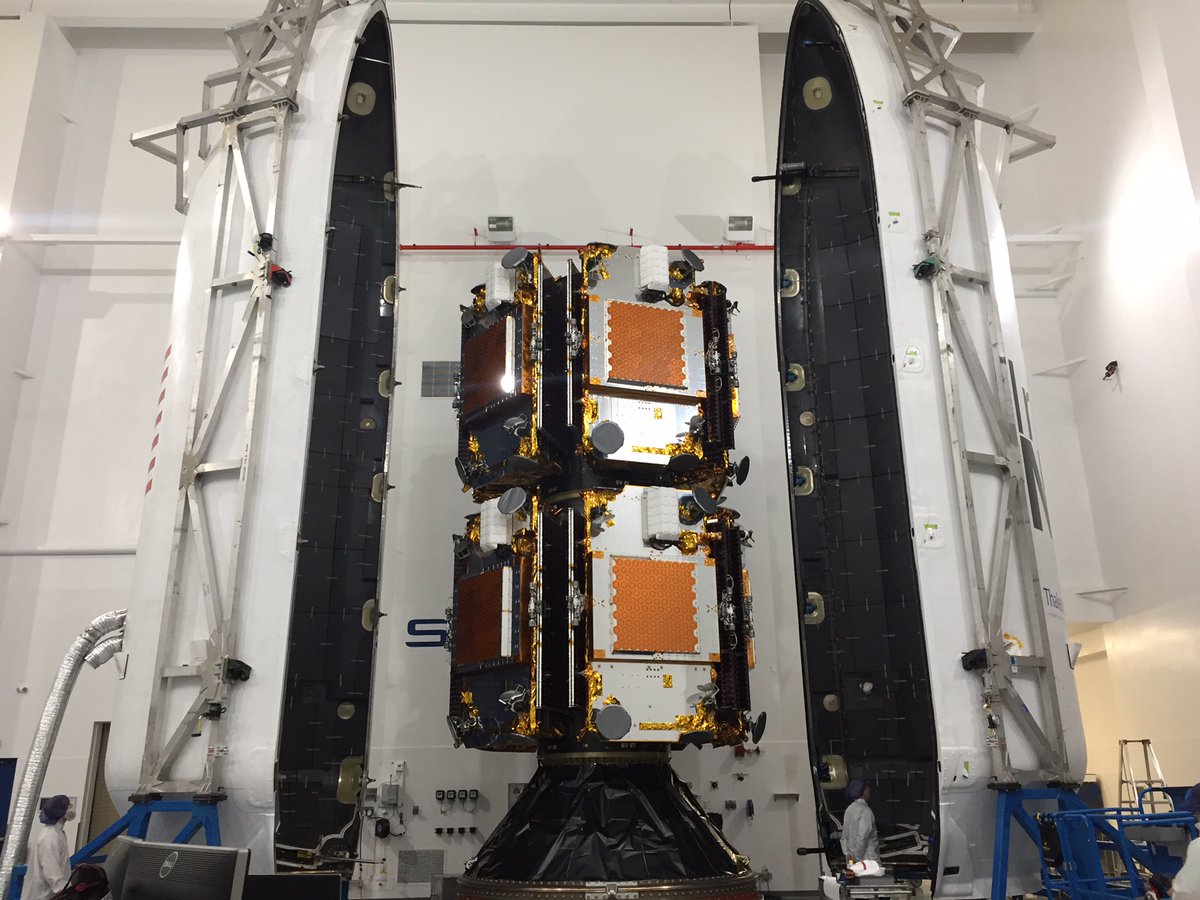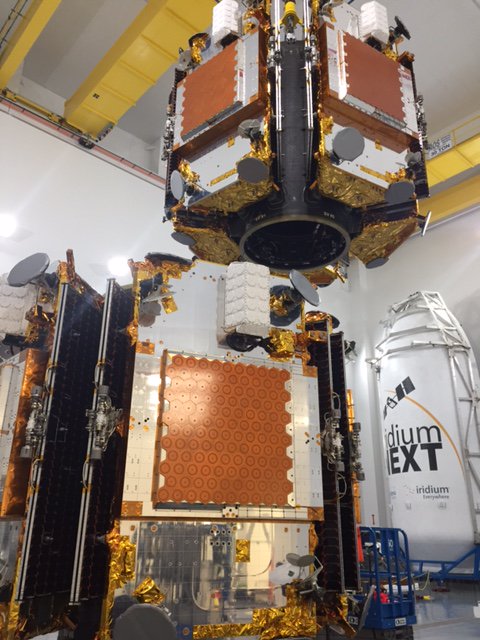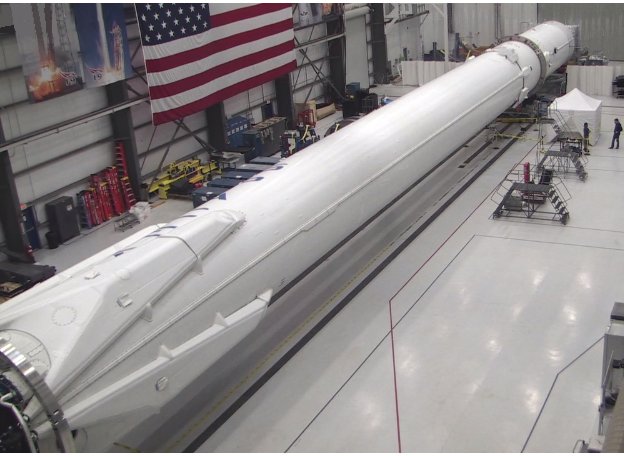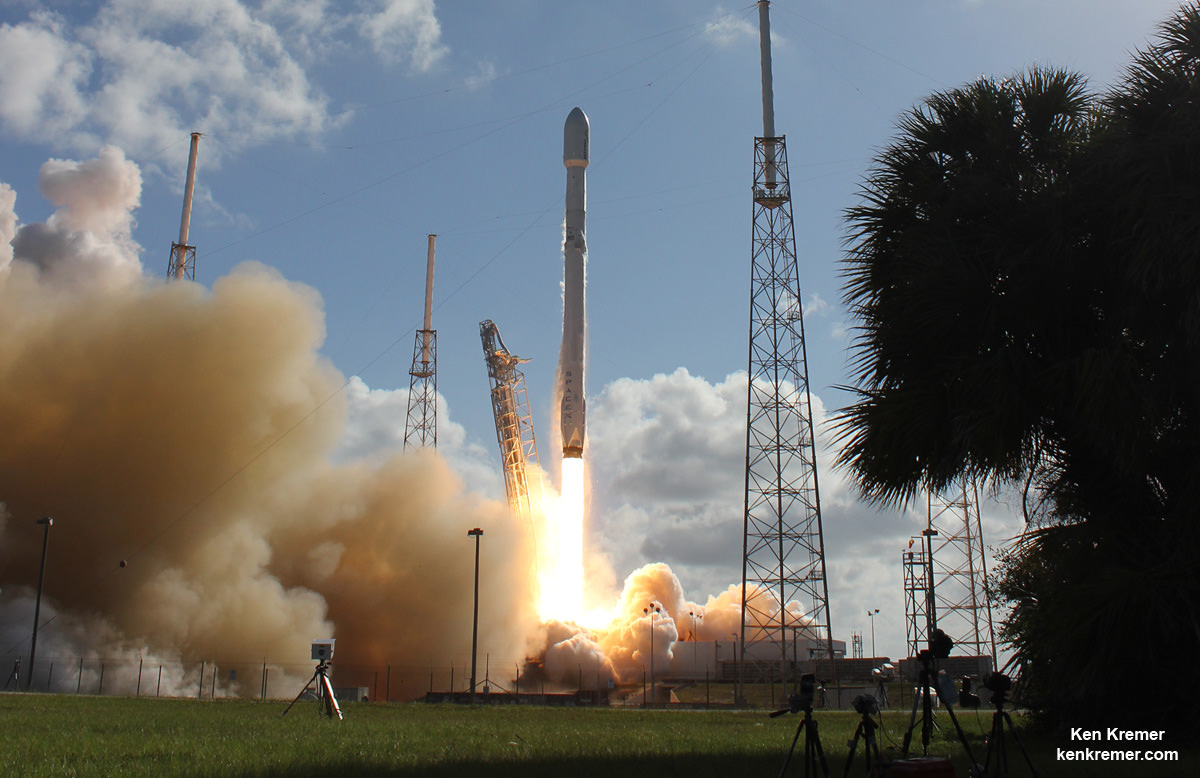
Technicians have fueled, stacked and tucked the first ten advanced IridiumNEXT mobile voice and data relay satellites inside the nose cone of a Falcon 9 rocket designated as SpaceX’s ‘Return to Flight’ launcher – potentially as early as next week – from their west coast launch pad on Vandenberg Air Force Base in California.
“Milestone Alert: The first ten #IridiumNEXT satellites are stacked and encapsulated in the Falcon 9 fairing,” Iridium Communications announced on the company website on Thursday, Dec. 29.
The excitement of a possibly imminent liftoff is clearly building – at least for Iridium Communications and their CEO Matt Desch.
“Our first 10 #IridiumNEXT satellites are all fueled now, tucked in and dreaming of flying in space. Very. Soon. Happy Holidays!” Iridium Communications CEO Matt Desch tweeted on Christmas Day, Dec. 25, 2016.
But SpaceX is still dealing with the fallout from the catastrophic launch pad explosion that eviscerated a Falcon 9 and its expensive commercial payload in Florida without warning, during a routine fueling test on Sept. 1, 2016.
Liftoff of the SpaceX Falcon 9 with the payload of 10 identical next generation IridiumNEXT communications satellites from Vandenberg’s Space Launch Complex 4-East could come as soon as next week – in early January 2017 perhaps as soon as Jan. 7.

SpaceX CEO Elon Musk had said he hoped to resume Falcon 9 launches before the end of this year 2016 – while investigating the root cause of the devastating mishap.
But the launch has been repeatedly postponed and pushed off into 2017 while investigators plumb the data for clues and fix whatever flaws are uncovered.
“Iridium’s @Falcon9_rocket in processing at @VandenbergAFB, getting ready for our launch in early Jan. Progress! #Thistimeitsforreal!” Desch elaborated.
Nevertheless, there has been no official statement issued by either SpaceX or Iridium Communications announcing a specific target launch date.
And the liftoff is completely dependent on achieving FAA approval for the Falcon 9 launch.
“This launch is contingent upon the FAA’s approval of SpaceX’s return to flight following the anomaly that occurred on September 1, 2016 at Cape Canaveral Air Force Station, Florida,” Iridium said in a prior statement, reported here.
All SpaceX Falcon 9 launches immediately ground to a halt following the colossal eruption of a fireball from the Falcon 9 at the launch pad that suddenly destroyed the rocket and completely consumed its $200 million Israeli Amos-6 commercial payload on Sept. 1 during a routine fueling and planned static fire engine test at Cape Canaveral Air Force Station in Florida.
The explosive anomaly resulted from a “large breach” in the cryogenic helium system of the second stage liquid oxygen tank and subsequent ignition of the highly flammable oxygen propellant.
Meanwhile, SpaceX and Iridium are preparing the payload and rocket for launch as soon as possible after FAA approval is granted.
“Satellites have been fueled, pressurized & dispenser tiers are being stacked as we move closer to first launch #IridiumNEXT #NEXTevolution,” Iridium elaborated with photos showing the recent processing in progress.
The Iridium mission is the first of seven planned Falcon 9 launches – totaling 70 satellites.
“Iridium is replacing its existing constellation by sending 70 Iridium NEXT satellites into space on a SpaceX Falcon 9 rocket over 7 different launches,” says Iridium.
“There were many challenges on the program, from orbit determination knowledge design, to encryption design, to integration and verification test planning, to planning for on orbit acceptance activities, but the team made it all come together and the satellites are ready for deployment to enhance the future of mobile satellite communications — I could not be more proud,” Joel Rademacher, Ph.D, Director, Systems Engineering for Iridium Next, said in a statement.
The goal of this privately contracted mission is to deliver the first 10 Iridium NEXT satellites into low-earth orbit to inaugurate what will be a new constellation of satellites dedicated to mobile voice and data communications.
Iridium eventually plans to launch a constellation of 81 Iridium NEXT satellites into low-earth orbit.
“At least 70 of which will be launched by SpaceX,” per Iridium’s contract with SpaceX.

Besides the launch, SpaceX plans to continue its secondary objective of recovering the Falcon 9 first stage via a propulsive soft landing – as done several times previously and witnessed by this author.
The goal is to eventually recycle and reuse the first stage – and thereby dramatically slash launch costs per Musk’s vision.
This Falcon 9 has been outfitted with four landing lags and grid fins for a controlled landing on a tiny barge prepositioned in the Pacific Ocean several hundred miles off the west coast of California.

Desch says that all seven of his Falcon’s will be new – not resued.
“All our seven F9s are new,” Desch tweeted.

SpaceX maintains active launch pads on both the US East and West coasts.
On the Florida Space Coast, SpaceX plans to initially resume launches at the Kennedy Space Center (KSC) from pad 39A, the former shuttle pad that SpaceX has leased from NASA.
Commercial SpaceX launches at KSC could start from pad 39A sometime in early 2017 – after modifications for the Falcon 9 are completed.
Meanwhile pad 40, which was heavily damaged during the Sept. 1 explosion, is undergoing extensive repairs and refurbishments to bring it back online.

It is not known when pad 40 will be fit to resume Falcon 9 launches.
Stay tuned here for Ken’s continuing Earth and Planetary science and human spaceflight news.

